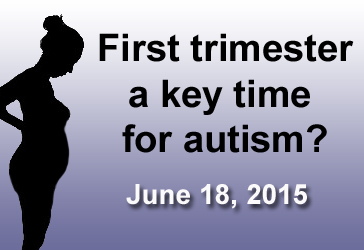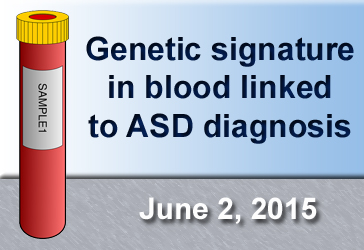Archives
June, 2015
Select a different month in the archive
Study Links Autism to Congenital Abnormalities
By Chelsea E. Toledo, M.A. on June 18, 2015

Background: Autism Spectrum Disorder (ASD) is characterized by differences in behavior, communication, and social interaction and has been linked to genetic and environmental risk factors. Studies haves suggested that congenital abnormalities such as cleft lips and palates—which begin to form early in pregnancy—are more common in children with ASD.
What’s New: On June 3, 2015, the Journal of Autism and Developmental Disorders published a study exploring the relationship between various congenital abnormalities and ASD in children with and without intellectual disabilities. The researchers examined the records of 17,695 Finnish children born between 1987 and 2000—4,441 with ASD and 934 with congenital abnormalities. They found that children with ASD were more likely to have congenital abnormalities of the eye, face, and neck, as well as the central nervous and musculoskeletal systems, development of which occurs during the first trimester. They also found that both the children with ASD and those with congenital abnormalities were more likely to have been born prematurely or at a low birth weight.
Why it’s important: This study suggests that—while ASD isn’t typically diagnosed until children are at least two years old—the underlying factors leading to the disorder may appear very early during gestation. Further research could illuminate the precise environmental, genetic, and epigenetic influences leading to ASD in the developing brain.
Help me understand :
| Source(s) : |
| Tweet |
Large-Scale Study Strongly Supports ASD, Parental Age Link
By Chelsea E. Toledo, M.A. on June 11, 2015

Background: In addition to the genes they pass on, parents’ age at the time of a child’s birth appears to influence ASD risk. Studies conducted over the past two decades have suggested that children of older parents have a higher risk of developing ASD.
What’s New: On June 9, 2015, a study in Molecular Psychiatry probed the role of parental age in ASD. The researchers examined health records from nearly six million children across five countries—with more than 30,000 ASD diagnoses. They found that the children born to mothers between the ages of 40 and 49 or to fathers older than 50 were more likely to have an ASD diagnosis than those with parents in their twenties. They also found an increased likelihood of ASD diagnosis in children born to mothers younger than 20 and in children whose parents were more than 10 years apart in age.
Why it’s important: This is the largest-ever multinational study looking at parental age and ASD. While the results appear to support the theory posited by previous studies—that genes inside sperm undergo mutations as men get older, contributing to ASD in the resulting offspring—future research could illuminate the biological roles of maternal age and age gaps between parents in relation to ASD.
Help me understand :
| Source(s) : |
| Tweet |
Study Paves Way for Blood Test for Autism
By Chelsea E. Toledo, M.A. on June 2, 2015

Background: To date, trained clinicians diagnose Autism Spectrum Disorder (ASD) by structured behavioral observation of a child. The typical age of ASD diagnosis is between the ages of four and five in US children. However, research has shown that interventions performed earlier in life lead to better outcomes in children with the disorder.
What’s New: On April 1, 2015, JAMA Psychiatry published a study testing the effectiveness of genetic biomarkers in the blood to predict whether very young children would receive an ASD diagnosis. The researchers first looked for factors differentiating the blood of 147 male children between the ages of one and four—56 with typical development and 91 who were diagnosed with ASD by their third birthday. They identified a genetic signature related to the body’s immune response that was 83 percent accurate at predicting whether participants had ASD. The researchers were able to replicate their findings in a separate group of 73 children, which included 44 boys with ASD.
Why it’s important: This study provides proof of the principle that immune-related gene expression differs in people with ASD. Future work could lead to a blood test to screen for the disorder in children as young as one year old, allowing for earlier intervention.
Help me understand :
| Source(s) : |
| Tweet |

